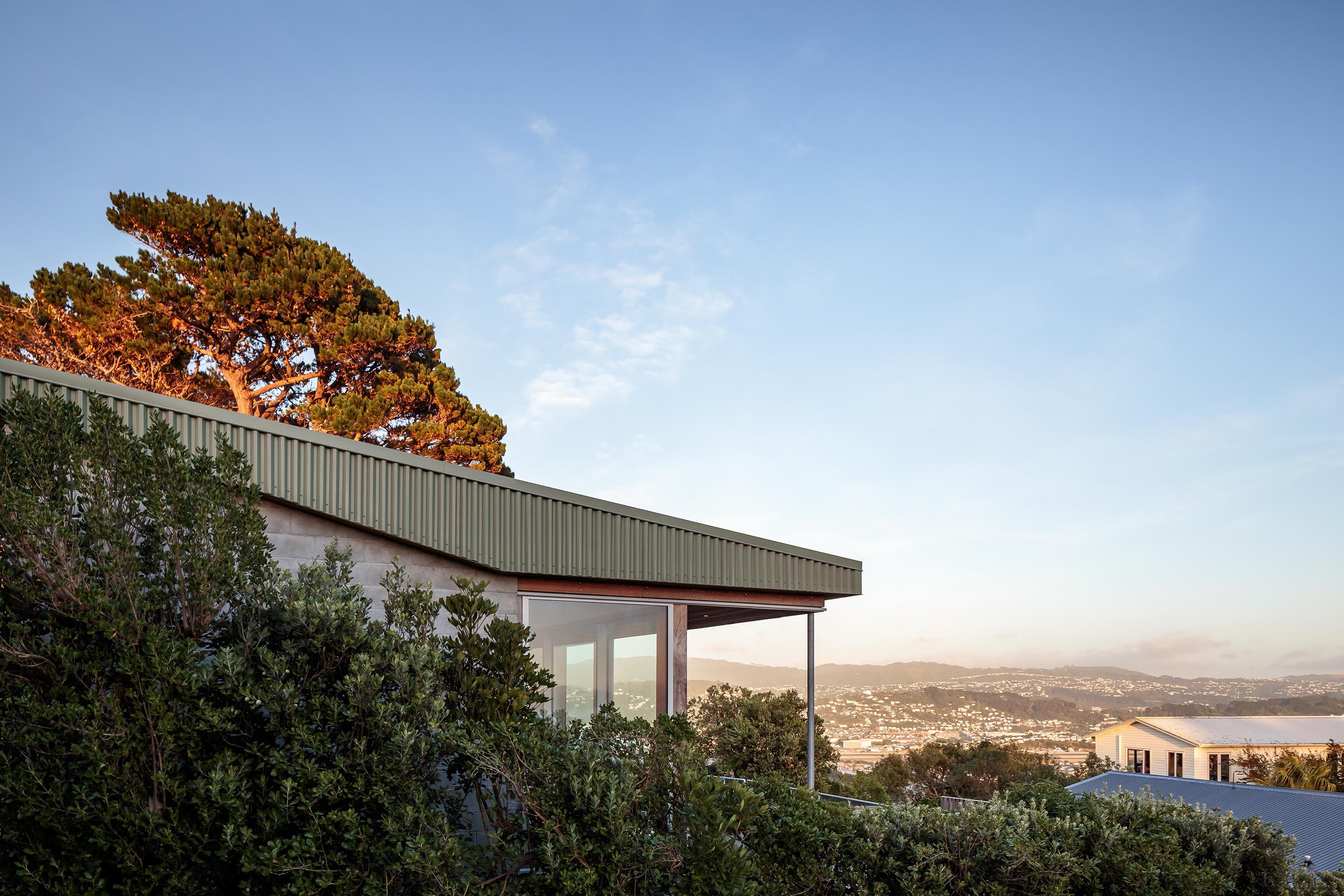

I have something of a false start for you, but bear with me. This is the kind of property only a young Wellingtonian architect would consider even vaguely possible. It sits high on a hill in Strathmore Park, reached by those switchback roads Te Whanganui-a-Tara does so well, and accessed by a long pedestrian walkway sandwiched between two other properties.
While these factors had no doubt deterred other buyers, to architect Stephanie Roughan (now with Patchwork Architecture) and her partner Sam Gifford, it seemed like an entirely practical choice. “We were just looking for a house at the time that was similar in ‘rent’ to our one-bedroom flat, and for the biggest section that was the cheapest,” she explains. “I mean, this shouldn’t be a surprise, we were just looking for properties no one else wanted.”
It did have a couple of things going go for it, however. The whole site was 680 square metres, with a duplex built as state housing in the middle of last century located towards the front. And at the top of the section, along the back boundary, was a public walkway that connected to an adjacent street. While it’s not a driveway, it does provide flat, walk-on access, which is something of a unicorn when it comes to affordable Wellington housing.
The couple had to maintain legal pedestrian access to their street address, but there was nothing to stop them subdividing the top of the section and creating a second – informal but highly necessary – entrance from the walkway. And because that walkway is to the south, it started to open up the possibilities for how a new house could be laid out. Rather than walking past the duplex to the back house, they could come in from the south, and have the living areas arranged to the north. Once they’d chopped down a massive old pine tree, that is. “We thought there’d be an amazing view up there,” says Gifford, “but it was so overgrown, you couldn’t tell.”
So, let’s start again, shall we? To get to the home of Stephanie Roughan and partner Sam Gifford, you wander down a pleasant open pathway that connects this corner of Wellington suburbia to the South Coast. As the path turns a corner and heads west, you see a long, low wall with wild planting in front of it. There’s a glass door, offering a hint at what’s inside, but it’s private, set down a few steps through the planting from the pedestrian access. Materials are sensible and hard-working – concrete block, corrugated steel. You come in the front door and the view opens up through the living areas, a wide-screen panorama that takes in Wellington Harbour, the airport and Lyall Bay.
It’s a simple house, 118 square metres in all, with three bedrooms, 1.5 bathrooms and a hard-working plan. Roughan went through various iterations – and a couple of resource consents – until she got to this. It also took the pair a few years to get their heads around the financing. Eventually, a kindly mortgage broker suggested they might like to subdivide and build sooner, rather than later – while they had two incomes and no kids. (“And don’t get pregnant until you’re done,” he added.)
The design fell into place once the top of the section was cleared. “It kind of started with where the walkway sits and how we respond to that,” Roughan says. “And then we found there’s such a great view up there, so it was about capturing that. It became this contrast between where to open up the house and where to close it down.” To the south, below the walkway, she placed a long, heavily insulated concrete-block wall. To the north, there’s a timber-framed wall, and lots of glass. On top of that, she placed standard triangular trusses, set upside down, so instead of a standard low-pitched roof, there’s a bit more of a rake to it: the roof flicks up and creates space for clerestory windows above the concrete wall.
Under that raking ceiling, she organised things very simply: living, kitchen and dining to the east; bedrooms, laundry and bathroom with a second WC to the west. Every room gets a different view, which variously includes Evans Bay and the South Coast. Rather than one big open-plan living space, there are places to retreat to, the living room subtly demarcated from the kitchen-dining area. “Dividing up spaces gives you the chance to add so much more storage,” says Roughan. “It’s just getting the right balance of how much is open and how much is closed – and having the glass to the front makes the spaces feel quite a lot bigger.”
It feels rich in texture, despite its modesty. As you enter, there’s a spot to sit and take off your shoes and hang up your coat. Flooring throughout is solid demolition mataī, retrieved from the building site of a family friend when it didn’t suit. It cost $4 a metre, prompting a last-minute trip to Auckland with a trailer, before diverting to Tauranga, where Sam’s parents live, and finally making it onto their floor 18 months later.
The door between the living spaces and the bedrooms is macrocarpa, with a toplight window; the bathroom is generous and fully tiled. “It was trying to keep the design to just a couple of nice things but not going overboard, because we just didn’t have the budget to go overboard,” says Roughan. “I think those are the things that give it that little bit of personality.”
One of the more pleasing things about the house is that it’s the opposite of a traditional subdivided site, reached up a private walkway or driveway past another house. Here, they’ve built at the back of the site, but ended up turning it into the front. When the wind is in the north or it’s particularly sunny, they sit in the back garden on wide concrete seats they cast with their friend, landscape architect Winston Dewhirst. “We have lots of conversations with people in the community who walk their dogs along the walkway,” says Roughan. “It’s been quite a nice way of embedding ourselves in the community.”
The couple finished and moved into the house in early 2022, before welcoming a son the following year. Recently, they spent a year in Tauranga near whānau before returning to Wellington earlier this year, to their little house on the hill that was originally designed for two and now houses a family. It works just as well. “It’s modest but considered and it’s done well,” says Gifford. “It’s not flash. It didn’t have a big budget but it’s just good honest architecture.”
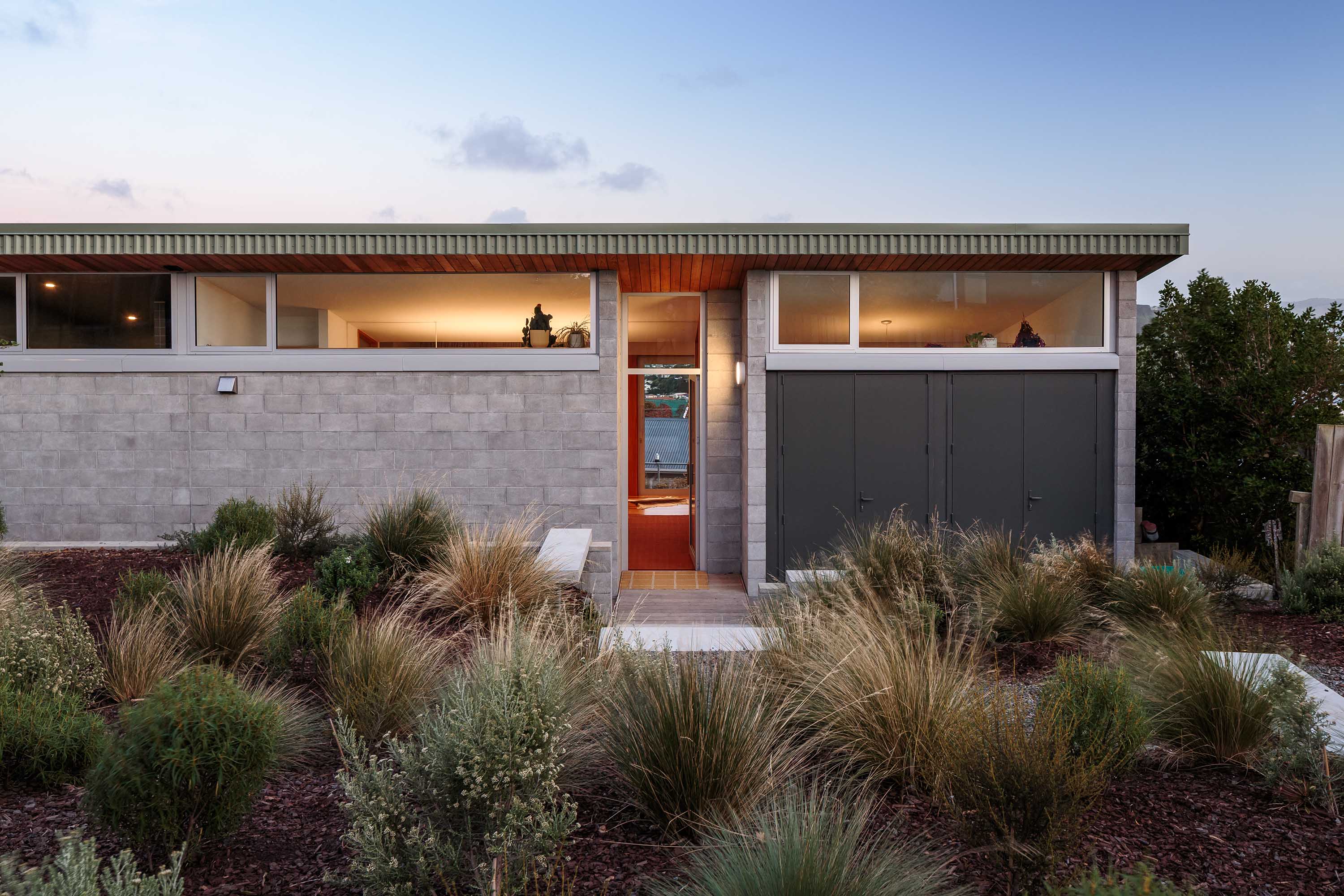
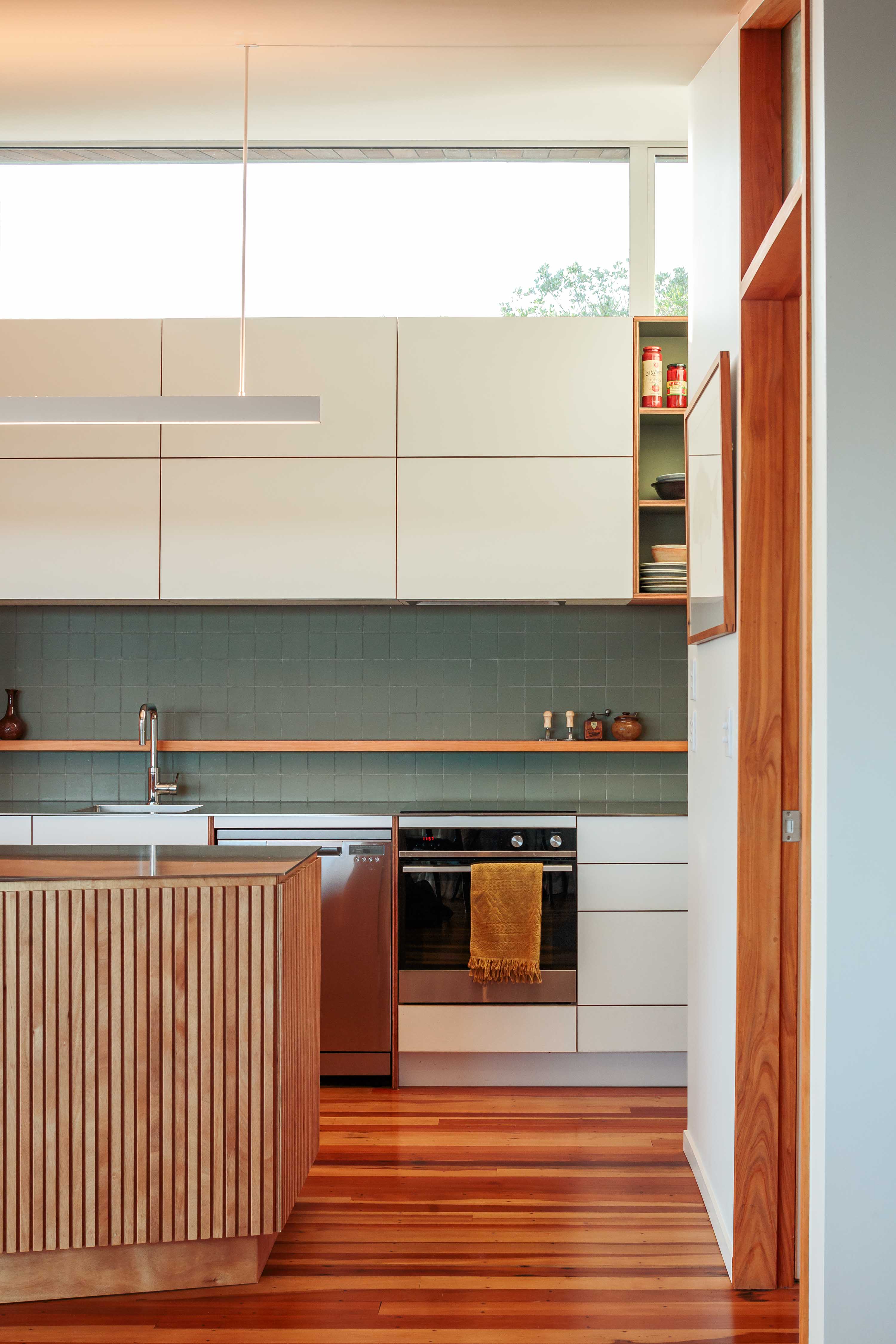
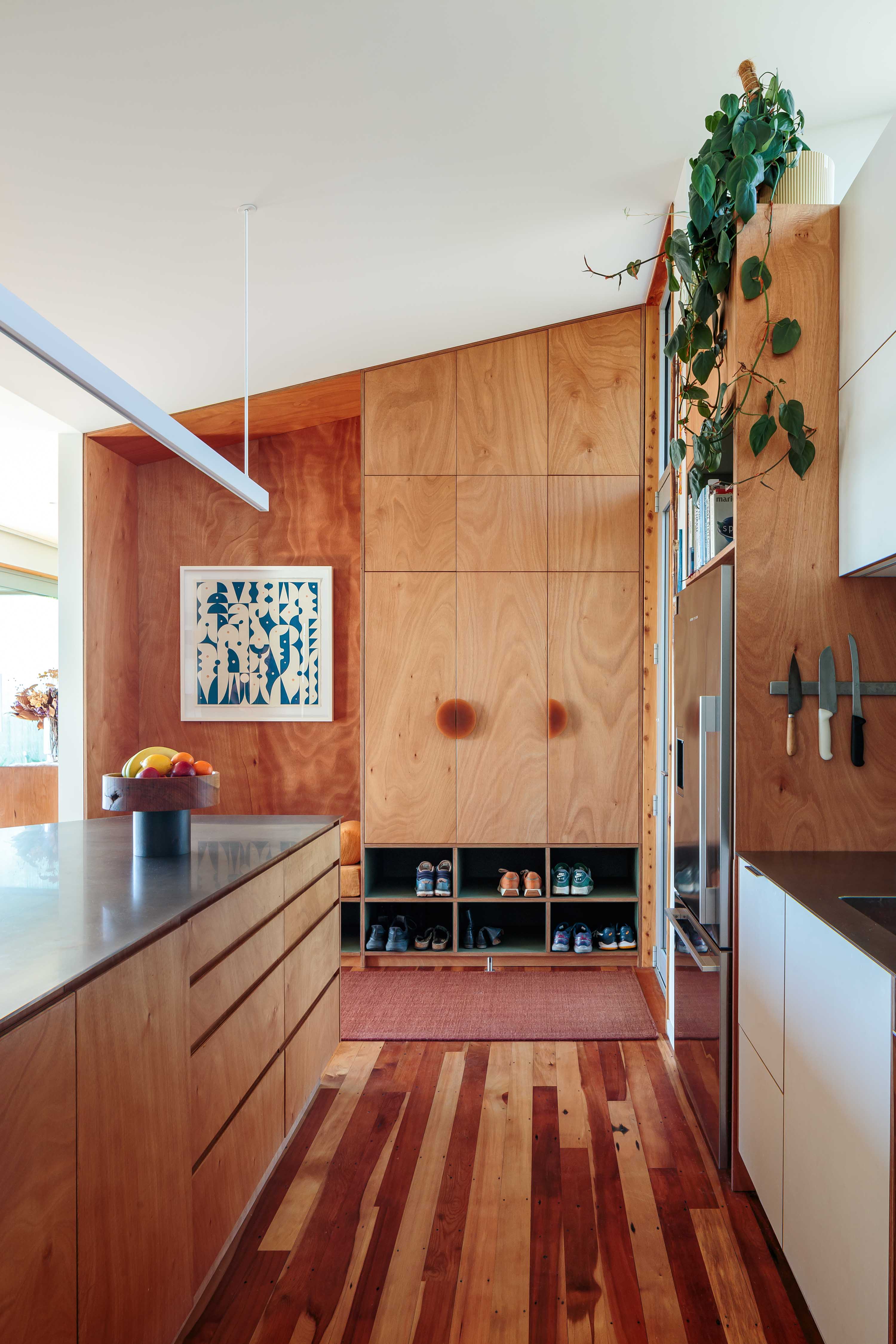
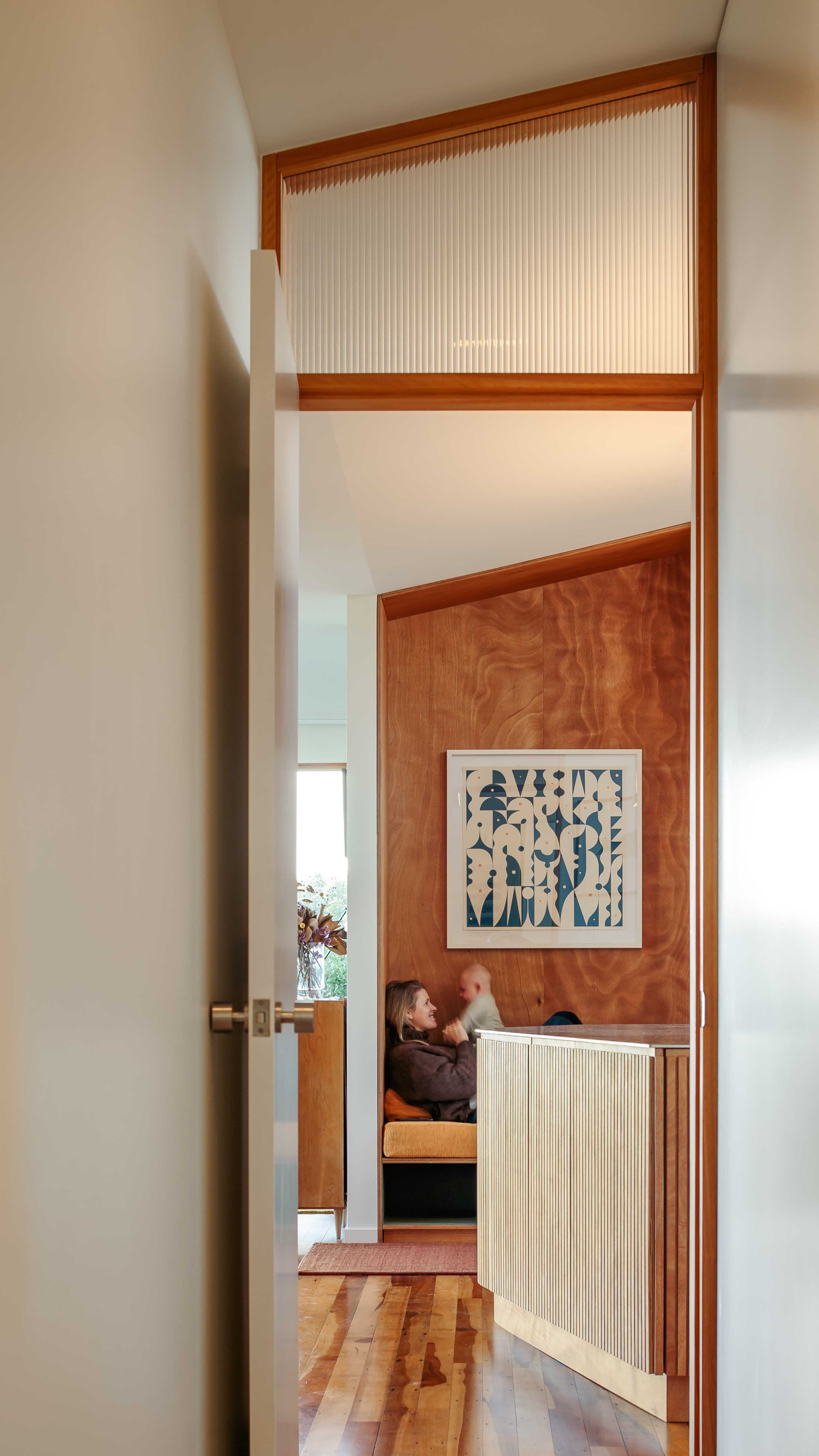
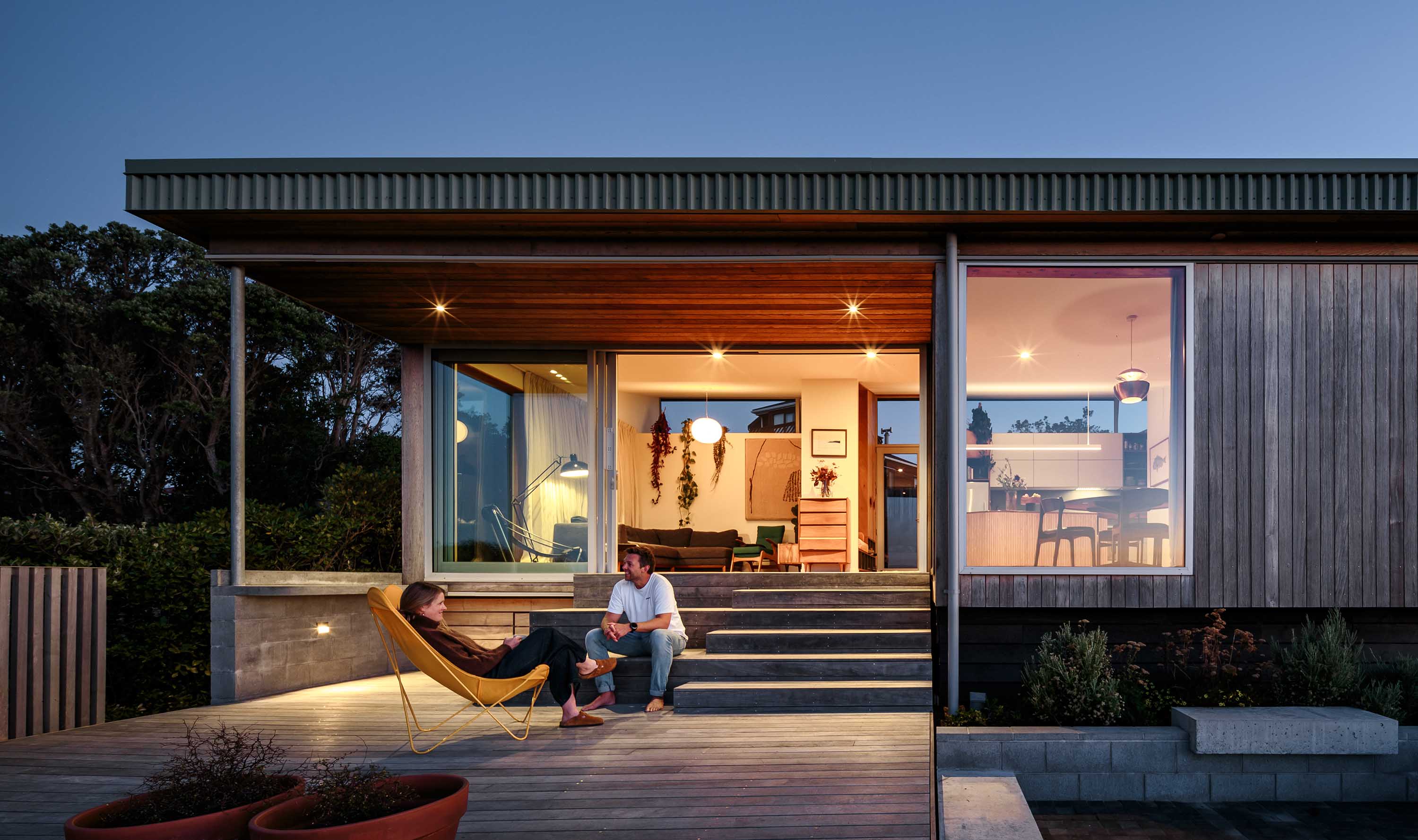
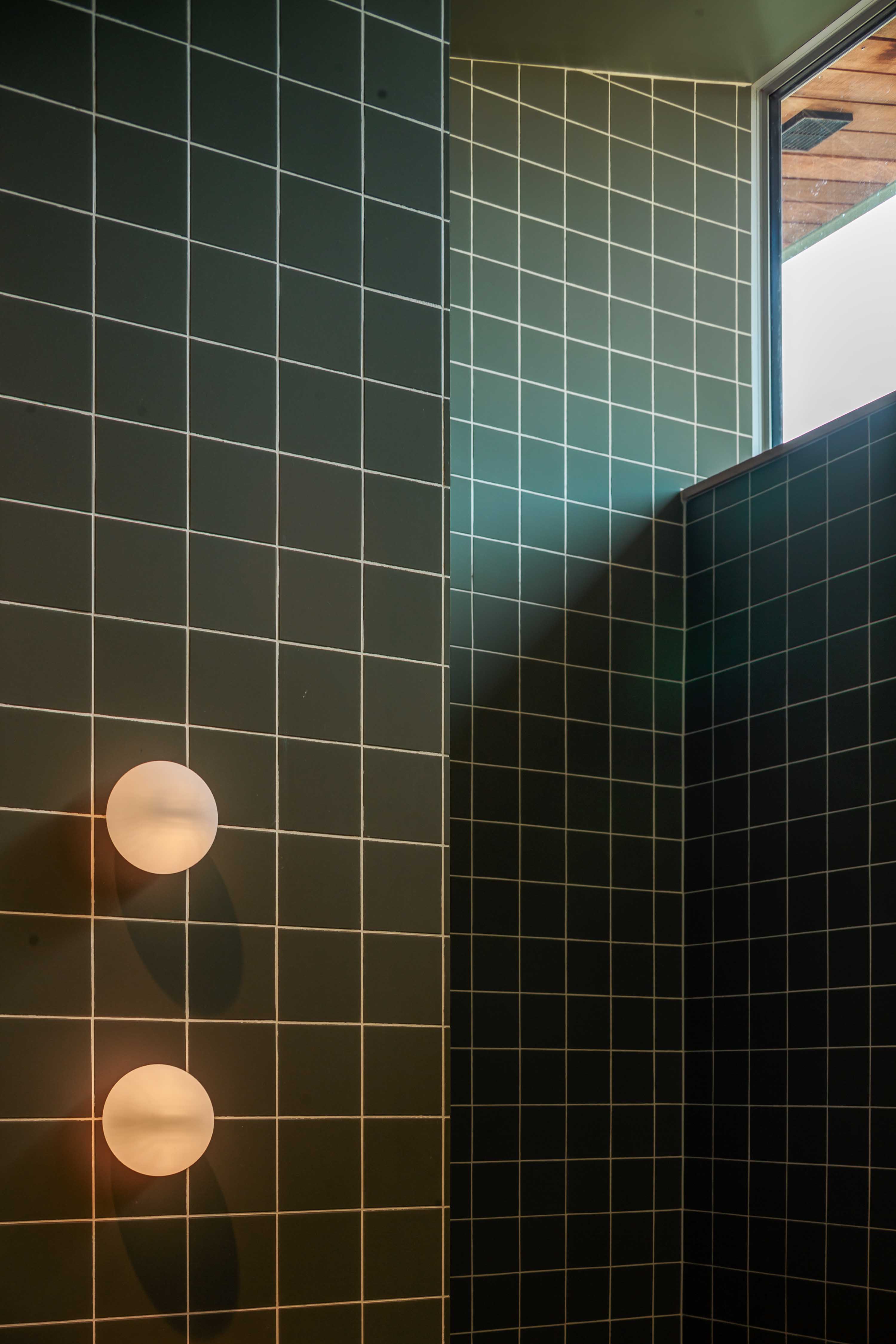
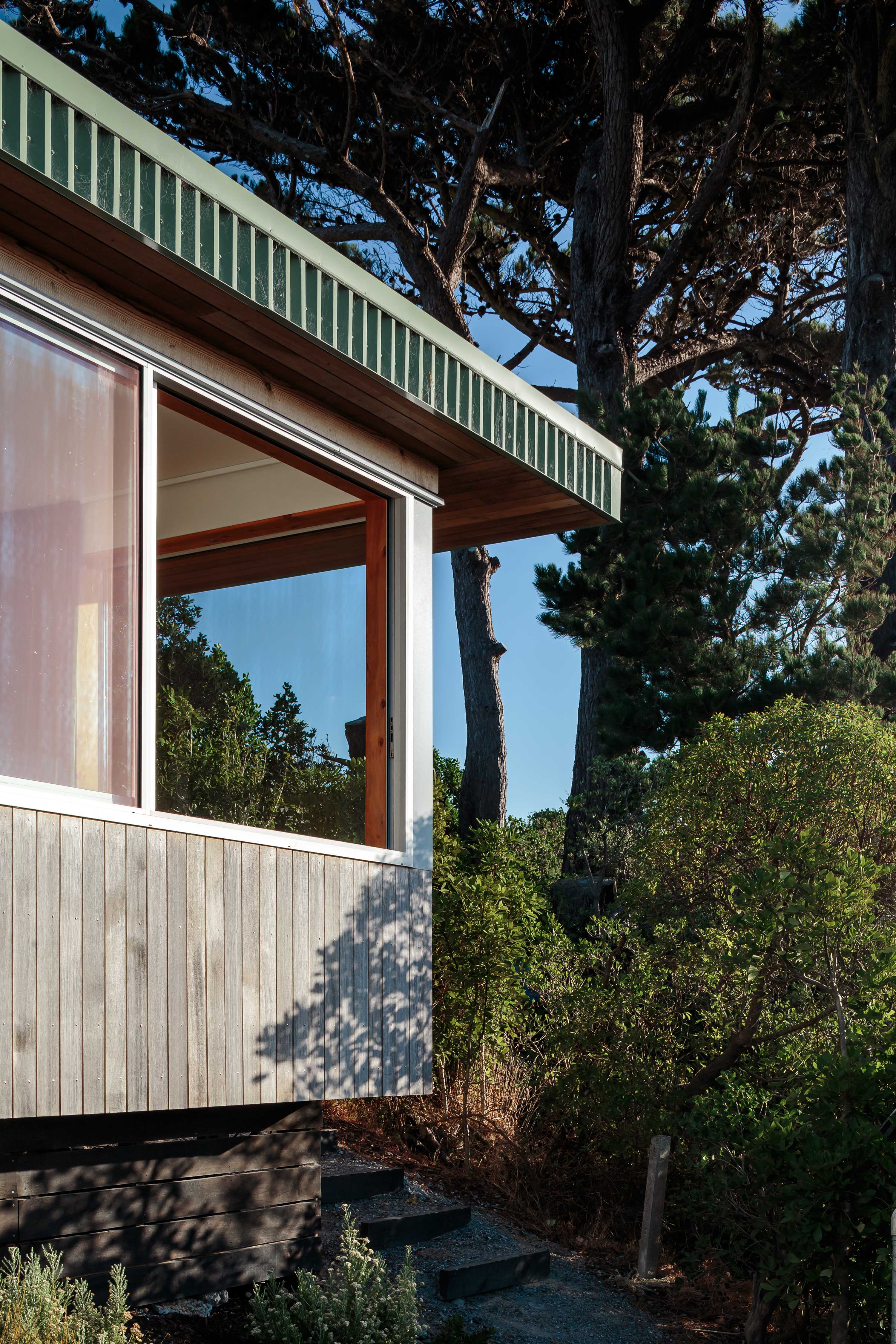
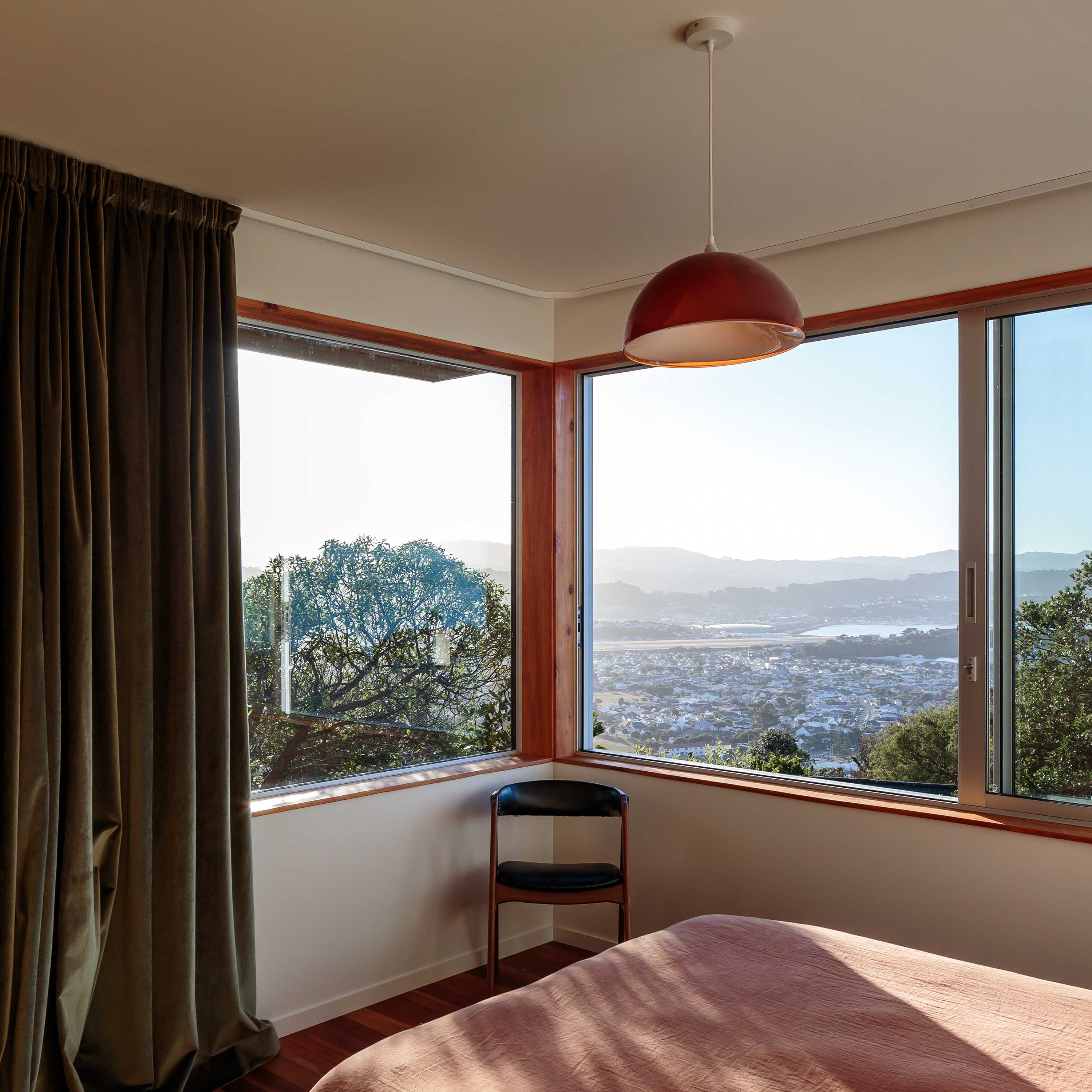
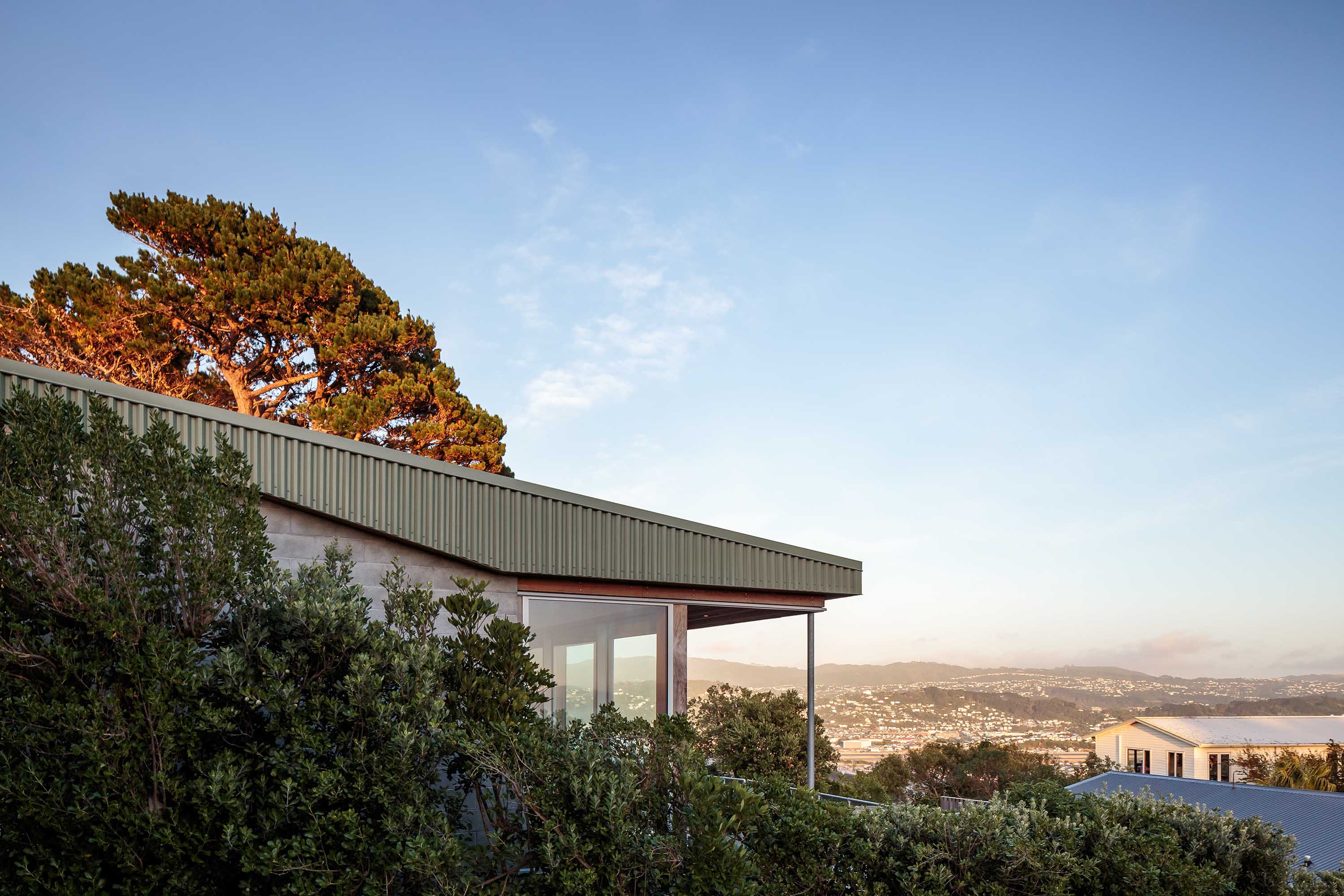
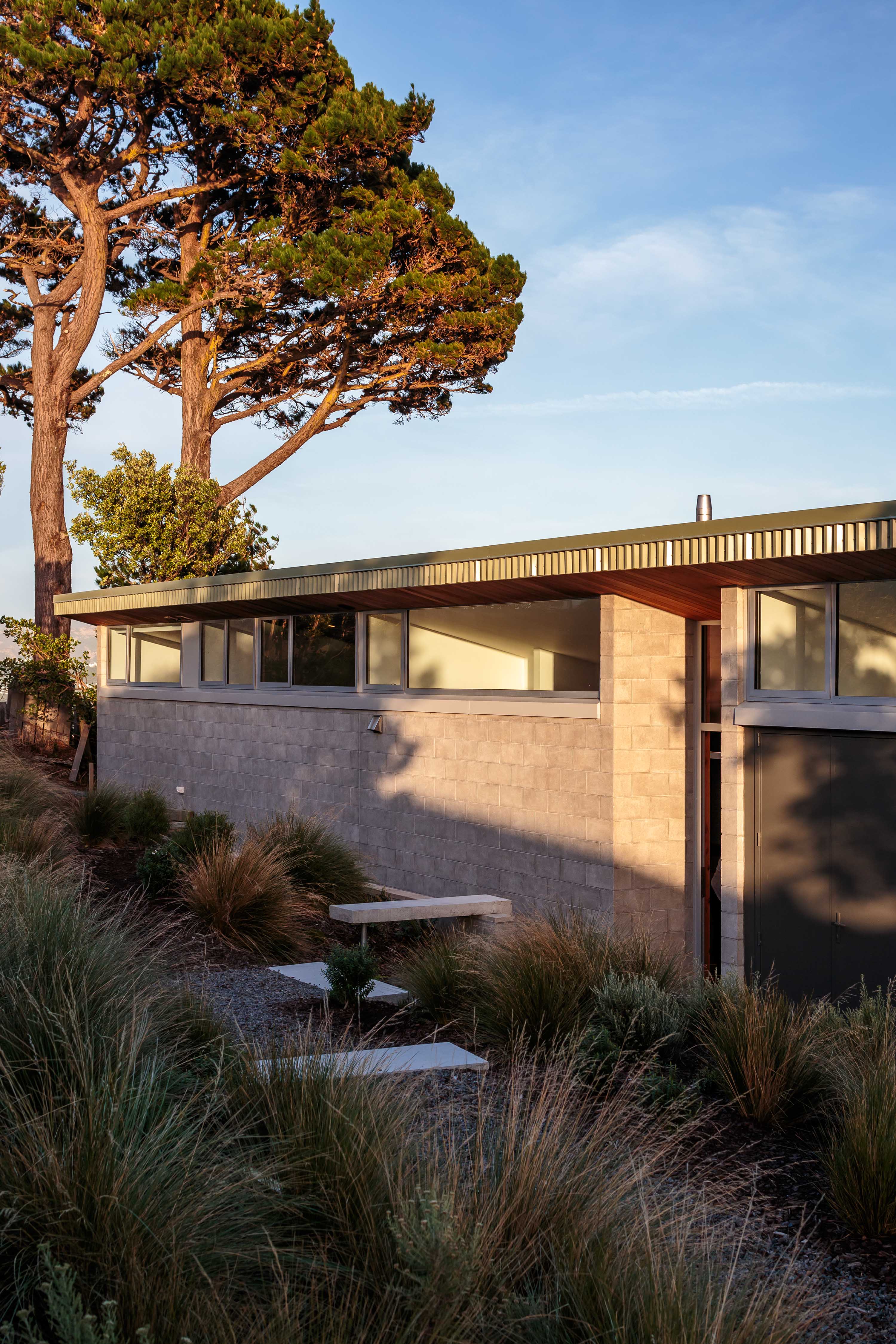
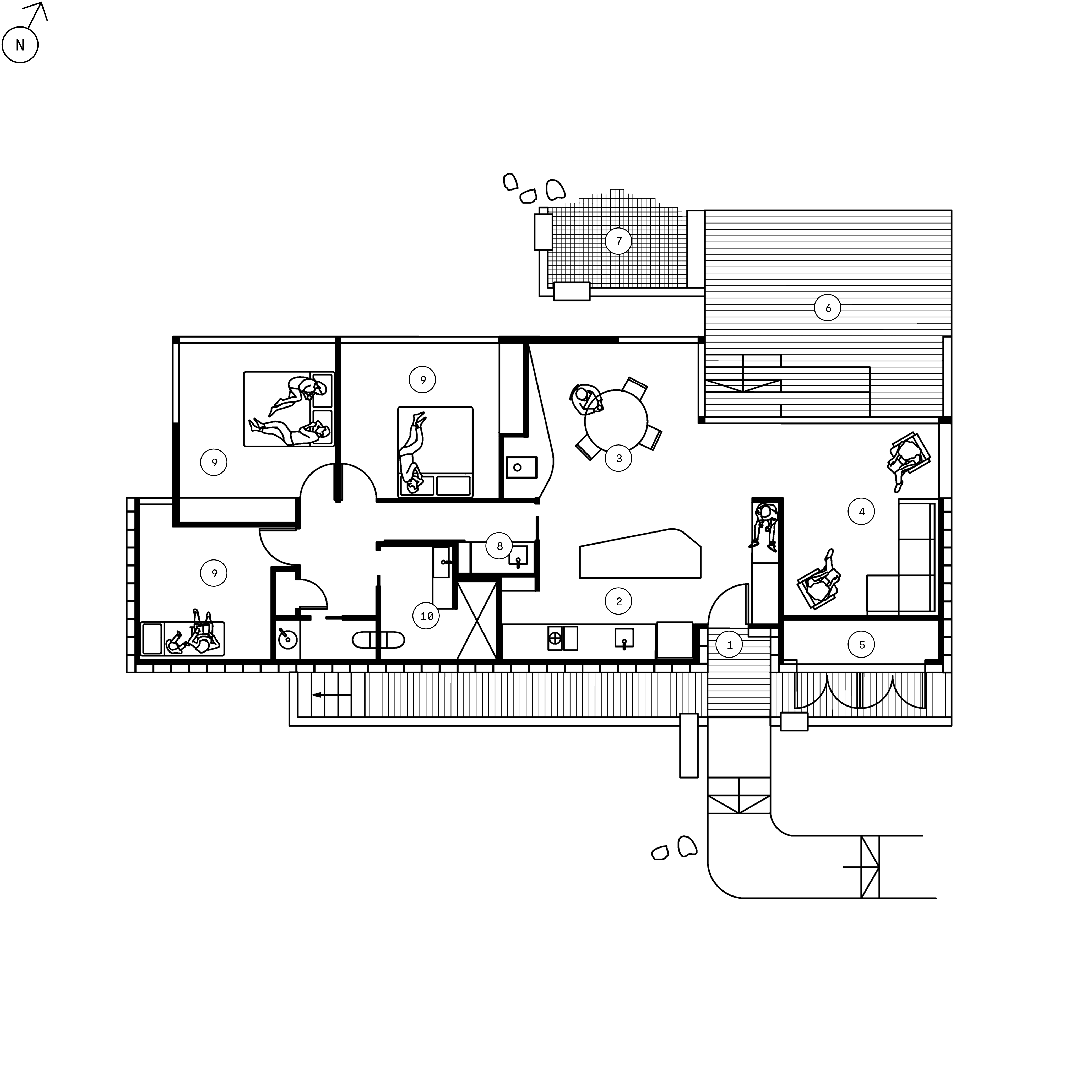
1. Entry
2. Kitchen
3. Dining
4. Living
5. Storage
6. Deck
7. Conversation Pit
8. Laundry
9. Bedroom
10. Bathroom
Related Stories: